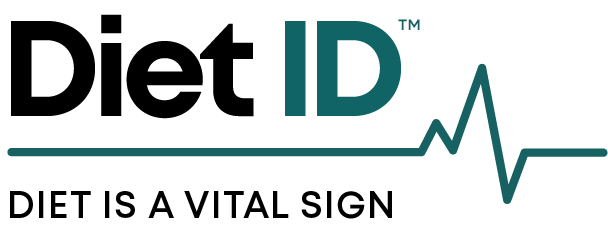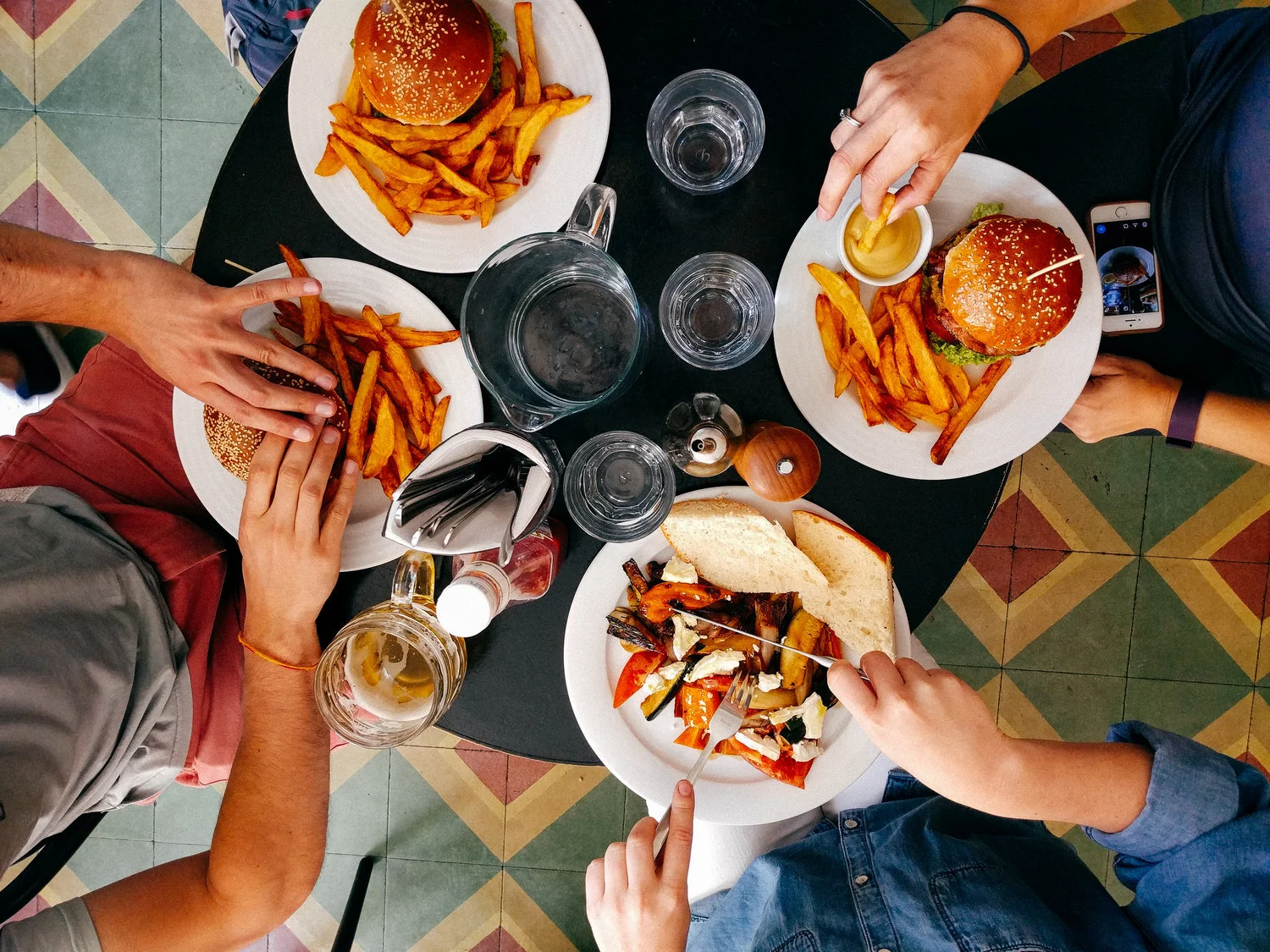I envision a healthy food system as one in which we can grow and produce diverse, nutritionally optimal foods.
Rehabilitating Diets to Rehabilitate Hearts: Have Hammer, See Nails
Diet ID Founder and CEO featured in smash hit movie "Game Changers"!
David, in his kitchen, talking about diet in the media.
You may have heard about the groundbreaking new Netflix documentary “Game Changers.” This film explores diet and athletic performance—which is nothing new—except that, historically, a meat-based diet was believed to give athletes an edge. This movie challenges this notion with science, athletic testimony, and a few broken world records to boot.
Diet ID founder and CEO David Katz lends his expertise to film’s inspiring message, which is dispelling the perpetual myth that elite athletes can’t perform at their peak without relying on animal foods for protein. In his scene, Dr, Katz says, “There’s massive global consensus about the fundamentals of a health-promoting diet.” Watch it to find out what the diet is all about, and what the experts say, and how athletes worldwide are performing after following a plant-forward diet pattern.
An Exciting New Partnership!
Diet ID and the Lifestyle American Lifestyle Medicine Association (LALMA) have joined forces to tackle the growing burden of chronic disease in Latin America. This alliance is particularly exciting because Diet ID will be working directly with top-notch LALMA dietitians to assemble authentic Latin American diet patterns to use in the Diet ID platform. Meanwhile, LALMA healthcare providers will have access to the Diet ID tool to assess and improve patient diets. Check out the press release here.
Meat, Overcooked: The Case for Less Heat, More Light
How to Talk to Your Population about the Meat Guidelines
For Food to Be Medicine
A long, long time ago, presumably in Greek, Hippocrates famously said: “let food by thy medicine, and medicine be thy food.” About a week ago, Anahad O’Connor said: nah, not gonna’ happen.
OK, that’s a bit harsh and warrants some elaboration. Mr. O’Connor writes on nutrition for the New York Times. In this particular instance, he was addressing recent studies highlighting the profound liabilities of “ultraprocessed” foods, and the obvious remedy embraced by the nutrition community: people should avoid such foods, and eat minimally processed foods instead. That, in turn, invites home preparation of meals, a tactic also widely invoked by health experts.
Citing a recent book on the topic, O’Connor’s article goes on to explain why home cooking is an unlikely solution among low income families because the same socioeconomic challenges that make “junk” food appealing in the first place make it especially difficult to “unjunk yourself,” and your family. The list of barriers is mostly self-evident: neighborhoods that qualify as food deserts/swamps; financial challenges; lack of time; and lack of basic kitchen equipment.
But what if, for instance, we could provide healthy, convenient, economical, family-friendly recipes on-line? We can, and do. That one is easy. What if, for instance, we could provide on-line cooking instruction at any given level of detail? That, too, of course, we can, and do.
What if, for those who haven’t the time or inclination to learn cooking, we instead relied on technology? What if we could make available “smart ovens” that cook everything on a single tray, at the push of a button, and while we’re at it- in half the time of conventional ovens? And what if we could populate smart phones with an inventory of healthful recipes that could be uploaded directly to that oven, so the button push corresponded exactly to a given meal- selected in advance for its particular, medicinal benefit? Yes, that, too- we can, and do- in this case, courtesy of a company called Brava.
We could potentially curate the ingredients for those very meals, and offer them already assembled, either in a supermarket, or via home delivery. And for those who have trouble eating well not just because good food is elusive, but for other reasons- from stress to insulin resistance, anxiety to insomnia, basal metabolism to body image- we might need artful, compassionate, state-of-the-art, artificially (and naturally) intelligent health coaching available 24/7. And yes, we have that, too.
The big question: How, on earth, do those most in need pay for all of this? The answer, of course, is they don’t- at least not directly. Hippocrates’ ancient proposition contains a hidden provocation to a modern world awash in diet-related chronic disease: food is not the only medicine, and all medicine costs you something. If you don’t spend on food as such, you will be spending more on the alternatives. Food comes in daily ounces of prevention (although it can do much more, too); Pharma dishes out the far costlier pounds of cure.
I am not suggesting that health insurers become everybody’s free lunch. I am saying that we can, and should, conduct studies to determine when, and for whom, whatever it takes to make food be thy medicine, makes it cost-effective medicine into the bargain. For food to be medicine for those most in need, we have the means, and know the promising ways.
Fighting for the Common Ground of Better Diet
Last week, the world recognized the 75th anniversary of the D-Day invasion that marked the slow but triumphant end to World War II. Looking back, we see the colossal effort required to hoist a communal flag, and establish common ground. There were flaws in that new order, of course- humans are never perfect. But perfect is the enemy of good, and along with other enemies, the Greatest Generation overcame that one, too- paving the way for much good, from NATO, to the United Nations, to the European Union.
Common ground is hard ground, but it is fertile ground- and this is likely true in all domains. Certainly it is true of diet, where battles born of personal preference, ideology over epidemiology, and overheated dogma roil routinely. This is my world, and as in other battles, lives are at stake. Meaning not the least disrespect to the honored memory of military heroism and loss, diet—as the single leading cause of death in the modern world—imperils many, many more of us with injury and early death than even so great a war.
Many factors challenge efforts to establish the common ground of better diet. We may think of it as a Promised Land of sorts, known, and not all that far away, yet seemingly elusive just the same.
There is profit in dietary dissent, and pseudoconfusion, for many industries- from Big Food, to Big Pharma, to media, to publishing. There is cover in denial, the latitude needed to manufacture willfully addictive junk foods without evoking the collective outrage of loving parents and grandparents.
There are the insidious, perverse incentives for experts to throw one another under the bus. But lives are at stake. Diet truly is the leading cause of premature death in the modern world. Unsustainable dietary practices, and forays into misguided fads, are a threat to almost all that matters to the human community- our land, our air, our water, our climate; social order itself; the beauty of our common planet, and the treasure of biodiversity.
Perhaps diet requires its particular version of D-Day. Perhaps it is time for the righteous to charge the beach, and secure a place of common understanding.
Imagine a world where we did not waste time debating what we already know to be true about diet and health, but all worked to turn common knowledge into the power of routine action. Imagine the years we could add to lives; the life we could add to years; the defense we could lend to our imperiled planet.
There is overwhelming, global consensus among experts about the fundamental truths of diet for the health of people and planet alike; a consensus born of science, and the sense required to interpret and apply it. The True Health Initiative exists to make that reality common knowledge.
What follows is common understanding, then common cause, on common ground; a strength derived only from unity; the chance to translate knowledge shared into the power of collective action.
These remain, as they have long been- things worth fighting for.
2 LIKES SHARE
Diet is a Vital Sign
Click here for Dr. Katz’s complete, original article.
Vital signs, measurements of essential body functions to indicate health and physical condition, include body temperature, blood pressure, heart rate, and respiratory rate. While it’s true that these measures are vital to health, they are bounded by something else that is only implied: time. They are not just time-honored, they are time limited. In other words, this short list was assembled because they indicate threats (or safeguards) to health over a span of seconds, minutes, hours, and days. These are the vital signs that are vital to health in the emergency room.
But such vital interest in health frequently runs to other time horizons. If vital signs indicate how health is now/soon, then both “health” and “soon” warrant operational definitions. If the conventional “vital signs” are fine, but fatty plaques are accumulating in the coronary arteries, “health” is not truly intact. Indeed, this process increases likelihood of heart attack in a timeframe that would constitute “soon,” indeed all too soon.
So while the conventional vital signs are vital, their assembly is arguably narrow and primitive. It overlooks major threats to health and overt disruptions to “essential body functions,” from corrosion of the coronaries to grave hormonal imbalances, from aberrant immune system responses to decimation of the microbiome. The list represents a Paleolithic perception of time.
Our perception of survival and time is rooted in evolution. Each of us has, at some point, felt that animating, irritating tingle as our adrenal glands reacted to some startle or threat, real or imagined. The instant physiologic response we experienced was bounded only by the speed of glandular release and neuronal reaction. Within mere seconds, we were already in the dwindling aftermath.
When flight or fight were the literal options, the vital was immediate and fleeting. We remain hard-wired to think this way.
But we can no longer limit vital sign significance to primitive survival. In modern times, thinking of health bounded by seconds, minutes and days is yesterday’s antiquated reality. Health is now something we perceive across a span of years and decades. This is the essential truth not only of the fields of Preventive Medicine and Lifestyle Medicine, but of life outside of medicine, where most of us consider it vitally important to live to see our children and ideally our grandchildren grow up, with sufficient vitality to enjoy it.
Accordingly: diet is a vital sign. Diet is the vital fuel that runs every “essential function” of the human body. Diet is the construction material for the growing bodies of those children and grandchildren we yearn to see grow up. The objectively measured quality of diet is robustly correlated with all-cause mortality and total chronic disease risk, and thus- is a key indicator of “health and physical condition” by any sensible interpretation. Diet is the single most potent predictor of longevity and vitality, morbidity and mortality in the modern world.
We manage what we measure, and must measure what matters. Diet has not taken its rightful place on that list despite its established importance - for want of a 21st century measurement tool. Such a tool now exists; I know, because I invented it.
Diet is a vital sign- and like all the others, warrants measurement as a standard of practice, and routine management. With new tools, we have new opportunities to do just that.
Ultraprocessed Food Makes Us Fat- Who Knew?
Ultraprocessed foods make us overeat, and get fat. Who knew?
Click here for Dr. Katz’s complete, original article.
Last week, a groundbreaking study was published by Dr. Kevin Hall and colleagues at the NIH. It is the first ever randomized controlled trial that specifically isolated the effects of eating mainly “ultraprocessed” foods on calorie intake, weight, and other measures. Ultraprocessed foods are basically junk foods — with industrially processed ingredients, chemical components, and/or significantly manipulated in a lab or factory (see examples below).
Ten men and ten women with stable, normal weighs were admitted to metabolic ward of a controlled medical facility for a month so that everything eaten and burned was closely monitored. Each participant was assigned to consume either an ultraprocessed diet or a minimally processed diet, and was instructed to eat as much or as little as they wished. Then after two weeks they swapped diets. Such a trial is called a “crossover,” and by allowing each study participant to serve directly as her/his own control, adds greatly to the minimization of potential noise in the data.
The resulting signal was perfectly clear. The ultraprocessed foods led directly to overconsumption of roughly 500 calories daily, with a weight gain of about 2 pounds per person over the two weeks. Surveys showed that both diets were equally satisfying and enjoyable. Remember, the participants got to eat as much or as little as they wanted, showing that weight management is not only about quantity, but about a focus on food quality.
The two diets were matched for many key elements of nutrition, including calories, macronutrients (fat, carbohydrate, and protein), sugar, sodium, and fiber. (In the real world, however, such nutrients are widely divergent between minimally processed and ultraprocessed foods. In particular, high concentrations of added sugar and salt and low fiber content are characteristic of “junk food,” and almost certainly contribute to the effects of such foods on total intake. As the investigators themselves noted: “Had the experimental diets used in our study allowed for greater differences in sugar, fat, and sodium content more typical of differences between ultraprocessed versus unprocessed diets, we may have observed larger differences in energy intake.”)
So, the real-world effects of ultraprocessed junk foods on overconsumption are almost certainly greater than this study demonstrates. Be that as it may, we now have proof that ultraprocessed food leads directly to overeating and weight gain. That is an important milestone, and one that rightly resulted in widespread media attention to the study.
With the proof of such effects now revealed to us all, there is one vital question the randomized trial cannot answer: what are we going to do about it?
Example: Lunch Day 5:
Minimally processed menu:
Grilled beef tender roast
Barley with olive oil and garlic
Steamed broccoli
Side salad (green leaf lettuce, tomatoes, cucumber and baby carrots)
Olive oil and vinegar
Salt and Pepper
Apple slices
Ultraprocessed menu:
Spam sandwich with American cheese on white bread
Potato chips













